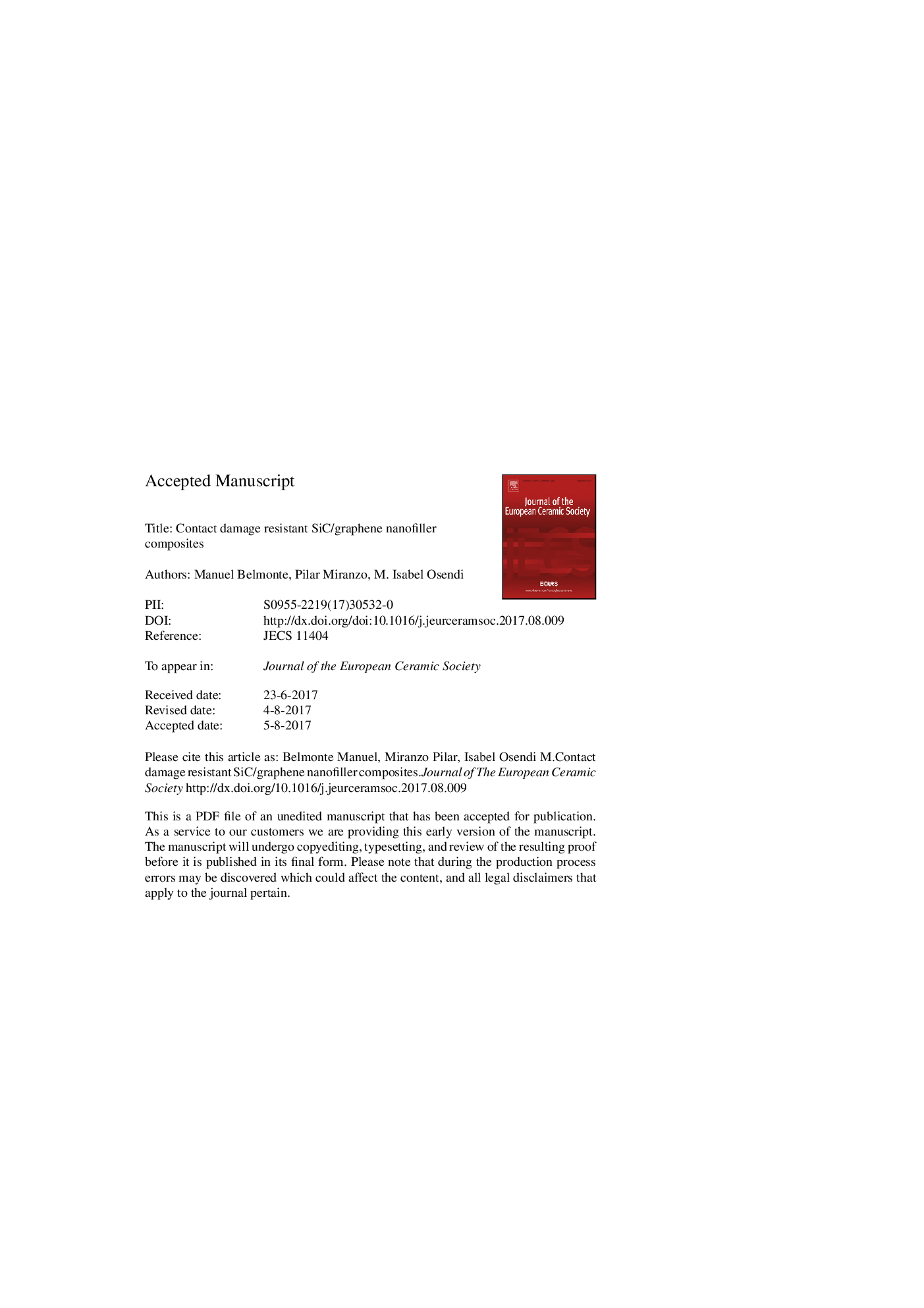| Article ID | Journal | Published Year | Pages | File Type |
|---|---|---|---|---|
| 5440216 | Journal of the European Ceramic Society | 2018 | 20 Pages |
Abstract
The short-crack domain and contact damage resistances of silicon carbide (SiC) ceramics containing graphene fillers (graphene nanoplatelets -GNPs- or reduced graphene oxide sheets -rGOs) are investigated by performing Hertzian contact tests. A progressive deviation from the linear Hertzian elastic response with increasing graphene content takes place, the composite containing 20 vol.% GNPs being the most deformable material. When adding increasing amounts of GNPs, the damage beneath the contact zone turns from well-defined cone cracks of monolithic SiC to a widespread subsurface damage where microcracks are generated due to the matrix/graphene interface debonding by a shear faulting process. This mechanism enhances the contact damage resistance of the composites, redistributing the stresses at the contact and limiting the long-crack formation. The composite containing 5 vol.% rGOs fully precludes the cone cracks development and enlarges the quasi-plastic damage zone, extraordinarily enhancing the contact damage resistance that approaches to that of a ductile material.
Related Topics
Physical Sciences and Engineering
Materials Science
Ceramics and Composites
Authors
Manuel Belmonte, Pilar Miranzo, M. Isabel Osendi,
